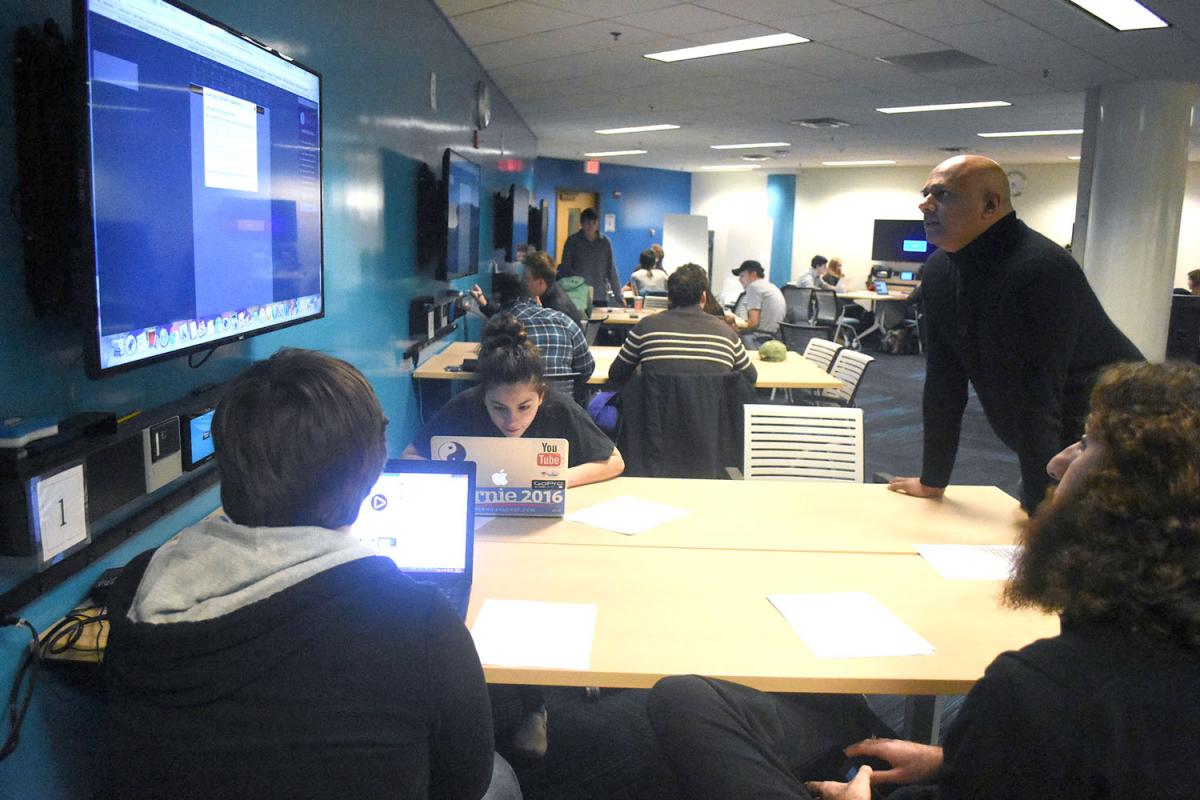Introducing Short, Team-Based Writing Assignments to Strengthen Screenwriting
- Flipped Course
- Team Writing
- Short Writing Assignments
 Introduction
Introduction
Students from a wide variety of backgrounds flock to Veerendra Prasad’s Introduction to Screenwriting course. Traditionally, students read and discuss feature-length screenplays while getting their feet wet in the form by writing short scripts. In this more active, team-based iteration, students work in teams on shorter writing assignments to build up their writing skills in place of lecture and discussion.
Active Learning in the Course
During class time, Prasad has students work in groups of three to four on scene writing exercises as a way of learning different cinematic storytelling techniques. The guiding philosophy of the class is that you learn by reading scripts, writing scripts, and getting feedback on scripts you've written. The exercises give the students a chance to write as much as possible and receive as much feedback as possible along the course of the semester. Students then compile and turn in their in-class scenes as a writing "sketchbook" at the end of the semester.
 Challenges and Solutions
Challenges and Solutions
Teaching the class in the team-based learning classroom has helped engagement during class sessions. There seems to be more accountability when there is a big screen displaying the scenes to the whole class for feedback. Although he could tell that the scenes the students were writing were getting better throughout the term, the first few times Prasad taught this way he was still seeing a lot of sloppy writing. It seemed that these assignments were treated as too "disposable." He started asking the team leaders to do rewrites on in-class scenes based on his feedback. He also removed other assignments to free up his time to focus on being more detailed in the feedback.
Changes in Instruction
By effectively "flipping" the course, Prasad feels that he is more efficiently occupying the students' time. In-class time is spent focusing on writing and out of class time is spent reading short lectures and feature-length screenplays. Making the students active in class and streamlining the amount of work outside of class seemed to improve class attendance.
Benefits for Students
Prasad has only taught one semester with these changes, but is encouraged. The writing, as a whole, was stronger than in previous years and he has particularly seen improvement in students that were in the lower third of perceived writing ability.
Photo Credit: Mary Lou Chipala
